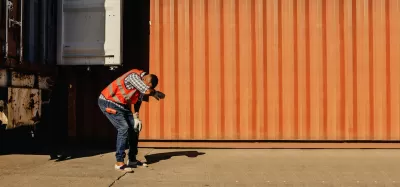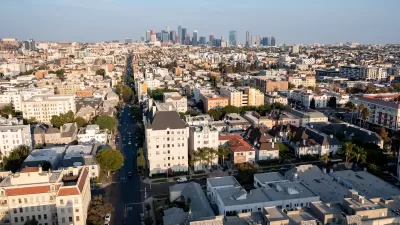California has introduced new standards to protect indoor workers from extreme heat, requiring cool-down areas and cold water in workplaces like car washes and warehouses.

California has recognized the growing danger of heat-related illnesses in indoor workplaces, where temperatures can become dangerously high, especially during the summer. Between 2010 and 2017, at least seven workers in such environments died from heat-related causes, highlighting the need for better protections. These workers often labor in settings like indoor car washes and warehouses, which can become hotter than the outside environment, posing serious health risks.
Despite the significant risks posed by indoor heat, much of the state's focus has historically been on protecting outdoor workers, such as those in agriculture. Ali Frazzini from the Los Angeles County Chief Sustainability Office pointed out that indoor workers are also at significant risk, particularly in facilities lacking air conditioning such as warehouses.
In response to these concerns, California has now established new standards to safeguard indoor workers. These standards include providing access to cool-down areas, cold water, and other protective measures to ensure that workers remain safe as temperatures rise due to global warming. These regulations mark a critical step in expanding worker protections beyond outdoor settings.
FULL STORY: California moves to protect indoor workers from deadly heat

Planetizen Federal Action Tracker
A weekly monitor of how Trump’s orders and actions are impacting planners and planning in America.

Maui's Vacation Rental Debate Turns Ugly
Verbal attacks, misinformation campaigns and fistfights plague a high-stakes debate to convert thousands of vacation rentals into long-term housing.

Restaurant Patios Were a Pandemic Win — Why Were They so Hard to Keep?
Social distancing requirements and changes in travel patterns prompted cities to pilot new uses for street and sidewalk space. Then it got complicated.

In California Battle of Housing vs. Environment, Housing Just Won
A new state law significantly limits the power of CEQA, an environmental review law that served as a powerful tool for blocking new development.

Boulder Eliminates Parking Minimums Citywide
Officials estimate the cost of building a single underground parking space at up to $100,000.

Orange County, Florida Adopts Largest US “Sprawl Repair” Code
The ‘Orange Code’ seeks to rectify decades of sprawl-inducing, car-oriented development.
Urban Design for Planners 1: Software Tools
This six-course series explores essential urban design concepts using open source software and equips planners with the tools they need to participate fully in the urban design process.
Planning for Universal Design
Learn the tools for implementing Universal Design in planning regulations.
Heyer Gruel & Associates PA
JM Goldson LLC
Custer County Colorado
City of Camden Redevelopment Agency
City of Astoria
Transportation Research & Education Center (TREC) at Portland State University
Jefferson Parish Government
Camden Redevelopment Agency
City of Claremont





























